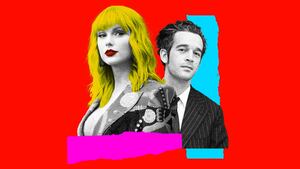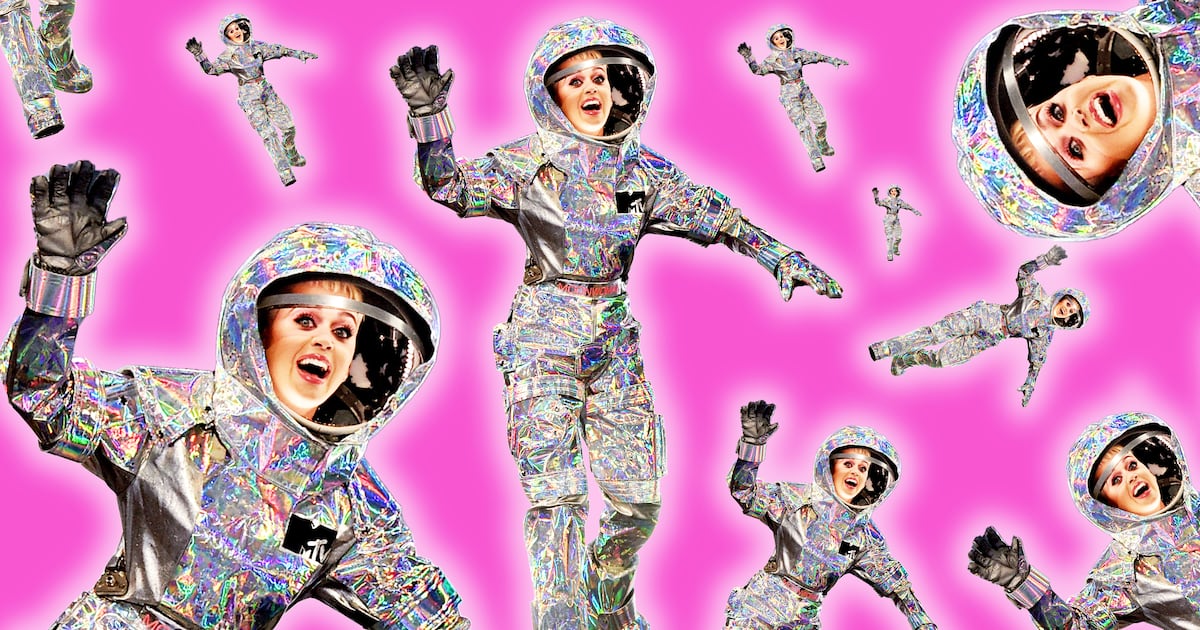It may come as a surprise that it wasn’t Taylor Swift referring to re-recording her hit albums as “collecting horcruxes and infinity stones” in her recent Time magazine Person of the Year profile that put me over the edge. (Although that kind of millennial speak also brings a twitch to my eye, even if it perfectly aligns with the perma-Tumblr brand that Swift has crafted for herself.) Rather, it was a quote from the article’s scribe, Time’s West Coast editor Sam Lansky, that enraged me. Lansky’s profile is a detailed and knowledgeable pop culture chronicle, but it takes little more than a single quote to reveal that the article is a Swift-approved puff piece.
Lansky says in his piece that, when Swift is speaking about her mythic journey to her current status as the untouchable queen of culture, he thinks about challenging her. “It did not always look like [a hero’s journey],” he writes of the massive success of Reputation, an album Swift notes as an integral point in the arc of her redemption from tabloid target to critical darling. “She did not look like someone whose career had died… I am tempted to say this. But then I think, ‘Who am I to challenge it, if that’s how she felt?’ The point is: She felt canceled.”
Reading that should be all that anyone needs to know about the careful control that Swift has over her career and image, and the kinds of people that she not only surrounds herself with but also allows to peer into her life. She wants nothing more than to keep the narrative she has so meticulously crafted intact. This is her picture-perfect image of herself: a pop star who clawed her way back from the dregs of cultural cancelation to revive a career that, in actuality, never came close to dying. Swift seemingly let Lansky in because she could regulate the circumstances so precisely that even the most discerning part of his profile would end in the relinquished bow of a head.
While I don’t think Swift should have to be defending her life every second that she’s talking to a reporter, it’s frightening how her cultural ubiquity has been able to entrance the world into a near-universal state of permanent praise. As someone who was a Swiftie for an entire decade of my life—now in recovery—I never thought that a person whose art I once admired so much could become insufferable. But Swift’s record-breaking 2023 proved me wrong over and over again.
For as pervasive as she managed to be for nine months of the year, it’s almost shocking to realize that news in Swift World was relatively quiet at the top of 2023. Swift was gearing up for her Eras Tour, which meant keeping a low profile throughout tour rehearsals and polishing up the re-recorded tracks on Speak Now (Taylor’s Version) and 1989 (Taylor’s Version). But by March, Swift was inescapable. The Eras Tour wasn’t just a massive success; it was its own subculture. Fans made and traded friendship bracelets for the shows, speculated over which secret songs Swift would perform each night with their Swiftie-exclusive mathematical algorithms, and planned their lives out months in advance, in accordance with each stop.

Taylor Swift and Ice Spice perform onstage during “Taylor Swift | The Eras Tour” at MetLife Stadium.
Kevin Mazur/TAS23/Getty Images for TAS Rights ManagementThe tour, an amalgamation of each of Swift’s album cycles—complete with a micro-revival of each record’s specific aesthetics and visual themes—was a dream come true for Swifties. It was a celebration of their love for their favorite artist, and a way for Swift to show her fans just how much their support has meant to her through the years. It was also a way to keep them in her clutches and enforce her narrative. It was during the Eras Tour stops that Swift issued a decree for fans to halt their attacks on John Mayer once and for all, and where she brought out Ice Spice to sidestep her brief new beau Matty Healy’s criticism of the rapper.
It wasn’t long after that concert date, in June, that Swift cut Healy loose. Her relationship with the 1975 singer was the rare occasion that her legion of loyal fans disagreed with her, so it makes sense that Swift would kick him to the curb when the winds changed their favor. Maintaining her calculated image takes a delicate balance of doing what she pleases and listening to what the fans want; the Swifties have to think they have some influence, without Swift losing a grip on her own life. After all, the last time that happened was when Kim Kardashian released an illegally taped phone call between Kanye West and Swift. It was the rare moment that another party managed to trip Swift up with her own words, a snafu that led to the making of Reputation. It makes sense that Swift would never want to revisit what she sees as her career’s lowest point. Luckily, it would take an intervention of divine proportions to alter the newly minted Swifties’ godly perception of her.

Taylor Swift and Travis Kelce have dinner at Waverly Inn in New York City.
Gotham/GC ImagesBy the time the Eras Tour’s American leg came to a close in August, Swift was practically Princess Diana levels of beloved. A new relationship with NFL star Travis Kelce was merely the next step toward achieving unimpeachable power. Kelce is the perfect combination of Swift’s best boyfriends; he’s got the squeaky-clean lovability of her former fiancé Joe Alwyn and the casanova qualities of Harry Styles. Naturally, Swifties love their relationship. Unnaturally, people are obsessed with them in ways that I could have never predicted. Do people still care about who celebrities are sucking face with? The last time I was concerned with who Taylor Swift was dating was during her 2012 relationship with Styles. Back then, it was still fun to watch someone cling to the fading twee aesthetic of the late 2010s, an iron grip clutching her fox sweaters and plaid skirts. I don’t find any of that same novelty in watching a 34-year-old woman run around like a lovesick high schooler wearing her boyfriend’s football jersey every day of the week. I’m not particularly charmed by Kelce’s doting promo tour, either.

Taylor Swift reacts during a game between the Los Angeles Chargers and Kansas City Chiefs at Arrowhead Stadium.
Jamie Squire/Getty ImagesAnd it’s not just Swift as a cultural figure that has grown tedious: Her artistic output has been consistently devolving too. It’s almost as if, now that she’s got the whole world in her grasp, she’s phoning it in when it comes to the actual music. The vault tracks on Speak Now and 1989’s rerecorded versions were massive disappointments, lacking the acoustic, confessional nature of the former and the bright-eyed charm of the latter’s original sonic landscapes. These tracks, produced largely by Swift’s frequent collaborator Jack Antonoff, all share the same sound as the pair’s most recent creations together. They may contain lyrics that Swift wrote around the period of those albums’ initial release, but their production blends so seamlessly with the music of Midnights—Swift’s most sonically tepid album to date—that they’re all but devoid of character.
When I was 14 years old, I fell in love with that totally earnest Swift, the one who wore her heart on her sleeve and didn’t give a damn what her detractors might say about her. Fearless was my introductory album, one that I played so often that, by the time she released Speak Now two years later, I nearly rear-ended someone speeding to Target after school to buy a copy. My love persisted for a few years after, until it became clear to me after the Reputation era what kind of game Swift was now interested in playing. Her career became less about the music itself, and more about how she wanted our perception of Taylor Swift the superstar to change with each new record. (Even Folklore and Evermore, two albums I mostly loved, were about positioning Swift as an artist who can pare herself back despite being the most famous person in the world.) A good pop artist is self-aware. But there’s a very thin line between cognizance and self-obsession.
I do, however, appreciate the Eras Tour concert film as a sort of 2023 victory lap. There’s an accessibility to The Eras Tour, one that highlights something that I find to be incredibly special about Swift’s current moment, whether or not I enjoy what she’s selling. It brings people, particularly young women, together and makes them feel empowered. Swift’s music makes people feel seen, removing some of the weight of complicated emotions that are impossible to grapple with. People find connection with one another in that relief, and forging in-person bonds in a digital age is something of grave importance.
Lansky attempted to grapple with this phenomenon in his profile, in a line immediately following his remark about Swift “feeling canceled.” “Maybe this is the real Taylor Swift effect,” he writes. “She gives people who have been conditioned to accept dismissal, gaslighting, and mistreatment from a society that treats their emotions as inconsequential, permission to believe that their interior lives matter.”
There is truth to that, no doubt. But viewing the world with an uncritical eye is a slippery slope. There’s a difference between letting someone feel a certain way about themselves and challenging that perception to get to a deeper, more meaningful, and universal truth.

Taylor Swift performs at the opening night of “Taylor Swift | The Eras Tour” at State Farm Stadium in Arizona.
Kevin Winter/Kevin Winter/Getty ImagesI genuinely ask—wouldn’t it be more interesting to hear the ways that Swift responds when she is so mildly confronted with the perspective of an outsider? What if Lansky had gone ahead and put the numbers in front of her, if he had told her that, by all metrics, she was undeniably still successful even at the point she deems her career’s lowest? If he reminded her that feelings and facts are two different things, but that the latter can still influence the former? Her answer may very well be the same, but at least it would be coming from the horse’s mouth, instead of another person kowtowing to the fabled story of Taylor Swift that the artist herself has constructed.
How millions of people can look at a celebrity with that much unbridled control over an in-depth journalistic profile and not shudder with fear—or, at the very least, think it’s a little strange that such a stalwart narrative can go unchecked—is shocking to me. These kinds of pieces should examine a celebrity’s career and personality with a microscope, and they should challenge ideas to prove or disprove the notions that said celebrities want the public to believe. If we automatically accepted everything that someone said about themselves as the irrefutable truth, our world would be far closer to collapse than it already is.
Great art, and great artists, must be able to withstand scrutiny. Only then will an artist have something interesting to say. Until then, I am not convinced that Taylor Swift has any intentions other than commodifying the idea of herself just enough to connect with young people who have yet to realize that Swift is now only a part-time musician, and full-time spin doctor.









